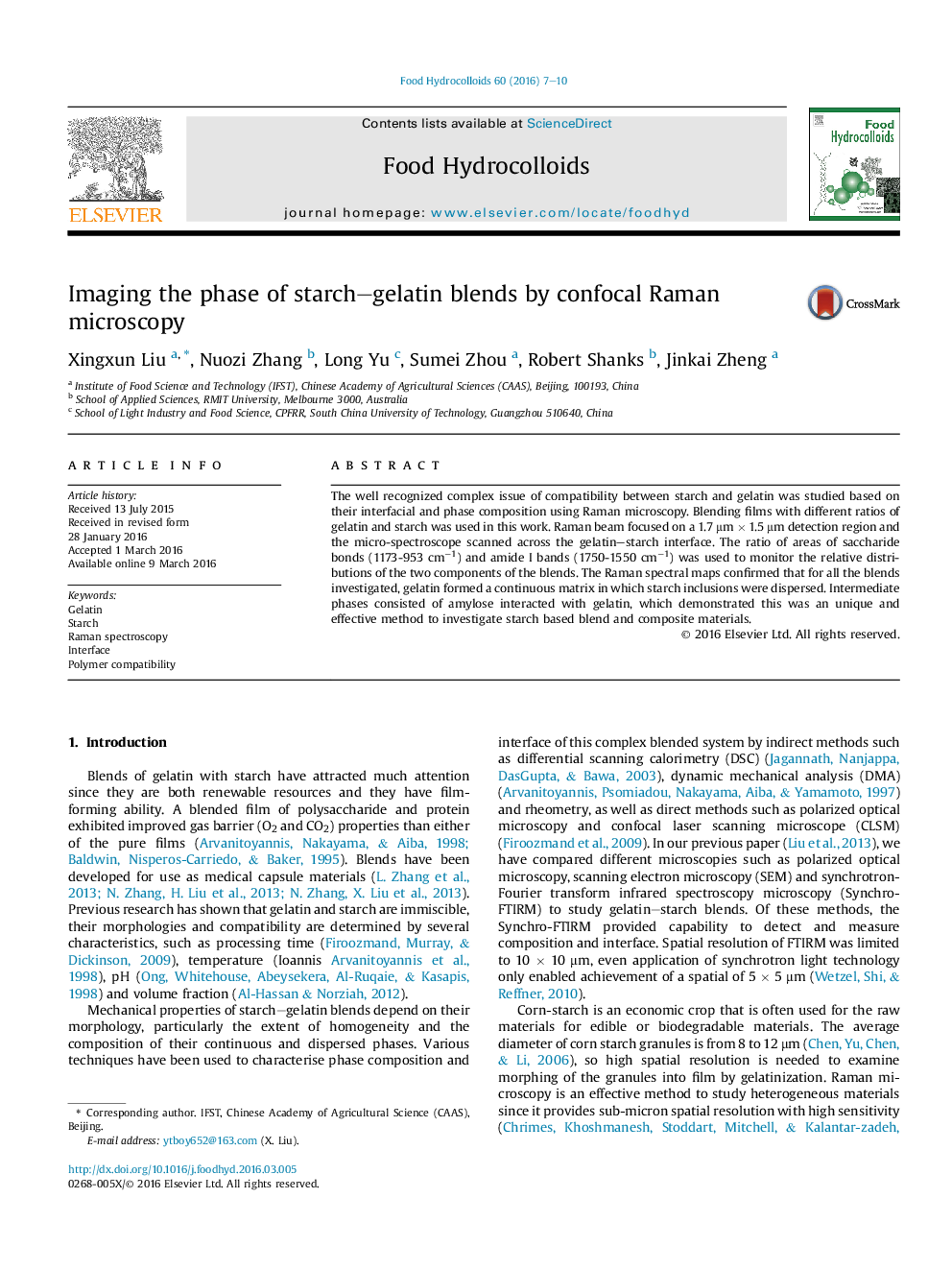| کد مقاله | کد نشریه | سال انتشار | مقاله انگلیسی | نسخه تمام متن |
|---|---|---|---|---|
| 603549 | 1454417 | 2016 | 4 صفحه PDF | دانلود رایگان |
• The interface and phase composition of starch–gelatin blends were studied by Raman microscopy.
• Gelatin formed a continuous matrix in which starch inclusions were dispersed.
• Raman microscopy is an effective method for creating chemi-maps of dispersed materials.
The well recognized complex issue of compatibility between starch and gelatin was studied based on their interfacial and phase composition using Raman microscopy. Blending films with different ratios of gelatin and starch was used in this work. Raman beam focused on a 1.7 μm × 1.5 μm detection region and the micro-spectroscope scanned across the gelatin–starch interface. The ratio of areas of saccharide bonds (1173-953 cm−1) and amide I bands (1750-1550 cm−1) was used to monitor the relative distributions of the two components of the blends. The Raman spectral maps confirmed that for all the blends investigated, gelatin formed a continuous matrix in which starch inclusions were dispersed. Intermediate phases consisted of amylose interacted with gelatin, which demonstrated this was an unique and effective method to investigate starch based blend and composite materials.
Figure optionsDownload as PowerPoint slide
Journal: Food Hydrocolloids - Volume 60, October 2016, Pages 7–10
